[javascript protected email address]
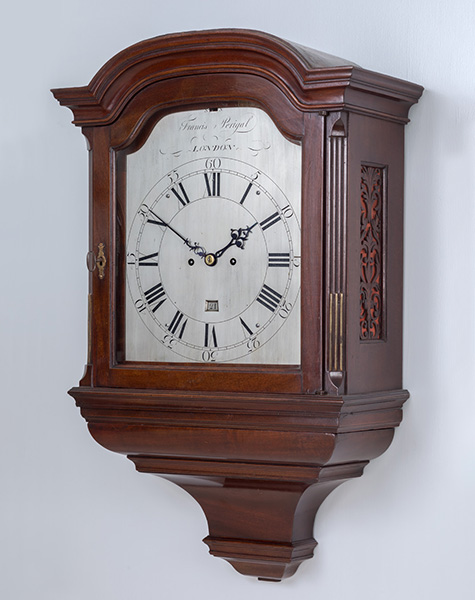
Francis Perigal, London

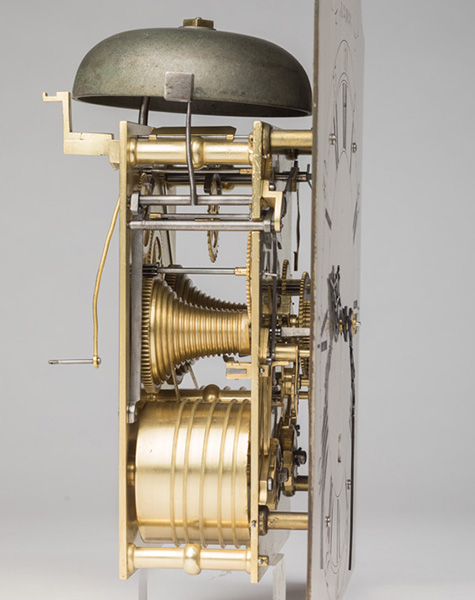
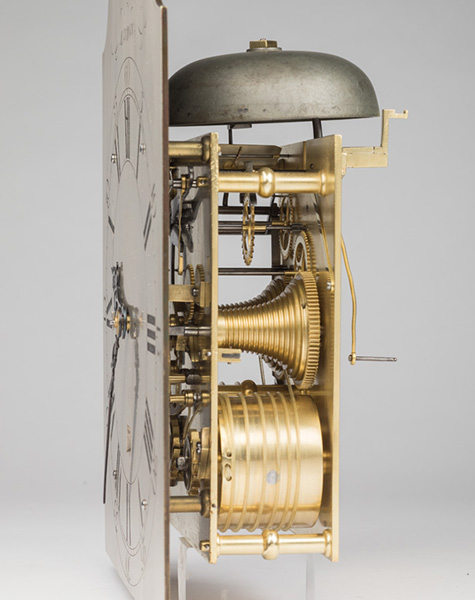
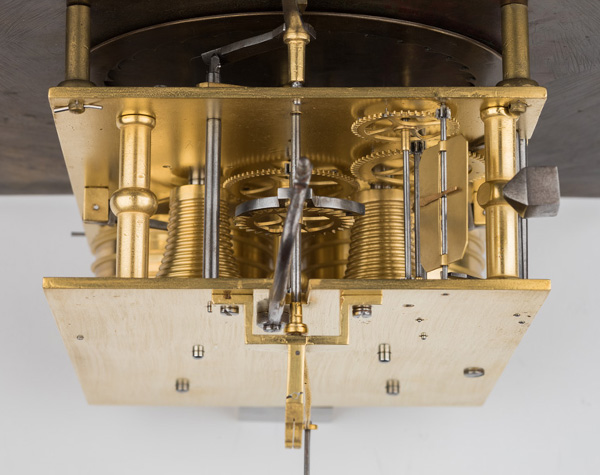
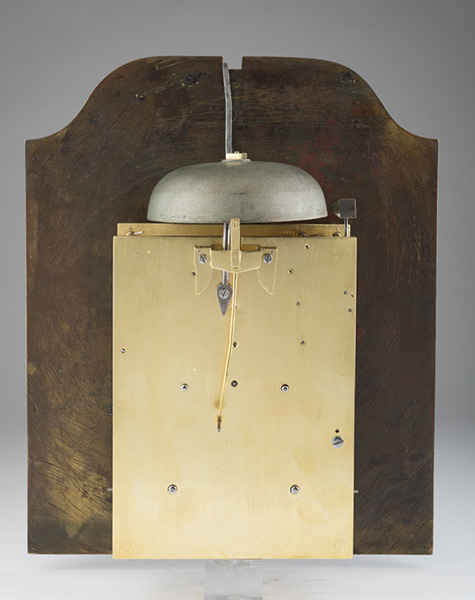
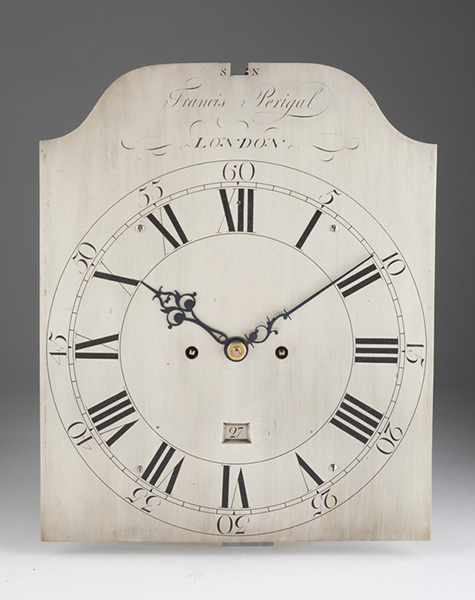
Circa 1790
Sold
26 � inches (67 cm.) high
A very fine 8-day mahogany hooded wall clock. Dial The silvered brass dial is signed Francis Perigal, London within the shallow arch with the strike/silent lever set just above. The chapter ring has both Roman and Arabic numerals with the original delicately pierced blued steel hands and a calendar aperture in the centre. Movement The movement has long brass plates conjoined by 5 baluster pillars, twin fusees and spring barrels with gut lines, the going train has anchor escapement with the original pendulum, the strike train striking the hours on a bell above the plates. Case The case is constructed of mahogany & oak with a shallow-arched top moulding and hood door flanked by stop-chamfered angles with brass reeding. Thick oak backboard and original oak seatboard, the moulded mahogany wall bracket slides forward to reveal a key compartment. Francis Perigal III was the son of the clockmaker Francis Perigal II of Royal Exchange d.1775 and grandson of the clockmaker Francis Perigal I of Threadneedle Street d.1756. Francis III is greatly admired by collectors for his high quality domestic spring and longcase clocks. He later joined forces with the clockmaker Duterreau and together were well known for their excellent quality ornamental Regency mantel clocks. The hooded wall clock has many of the good looks and advantages of a longcase clock without stealing any floor-space. The hooded wall clock was popular between about 1790 and 1805. The earliest versions had verge escapement but they very quickly adapted to the more accurate anchor escapement but with the advantage of a longer-than-usual pendulum hanging well below the backplate. The added length was cleverly accommodated by a handsome moulded wall bracket which slides forward and conveniently doubles to hold the case and winging keys.
